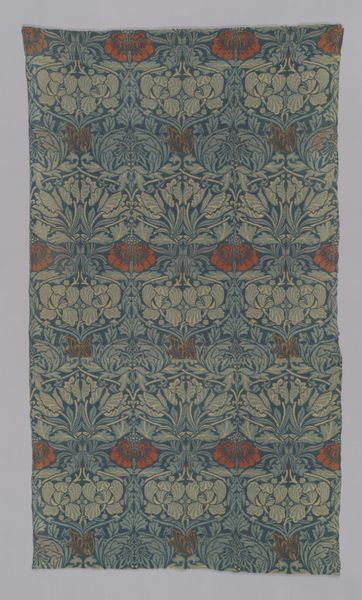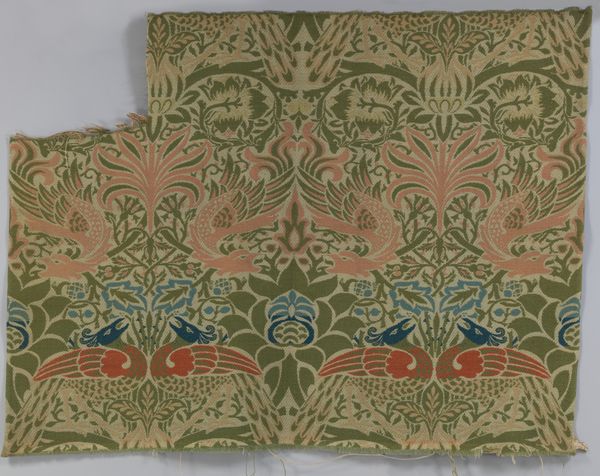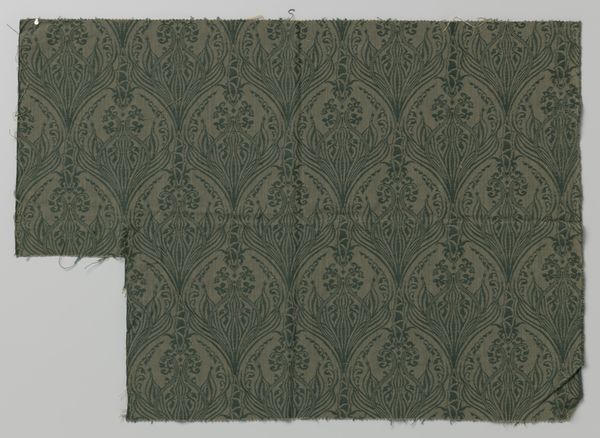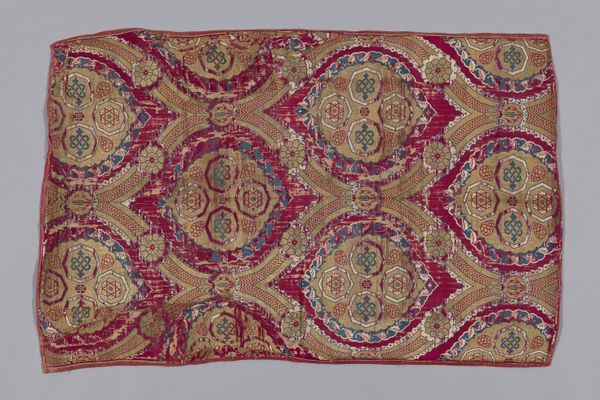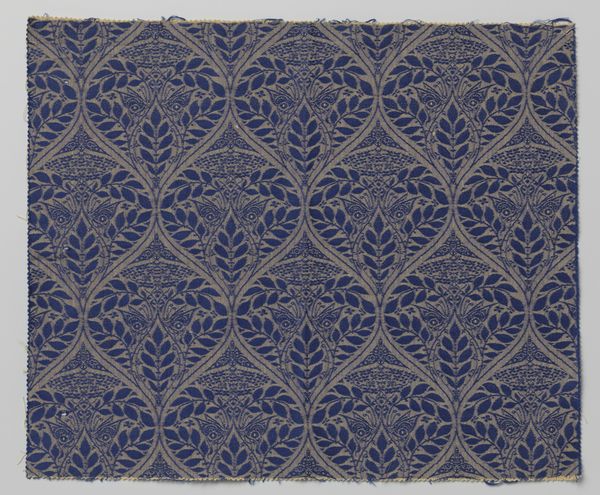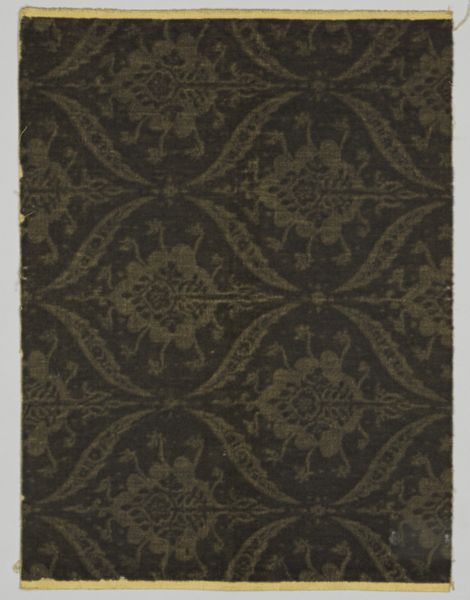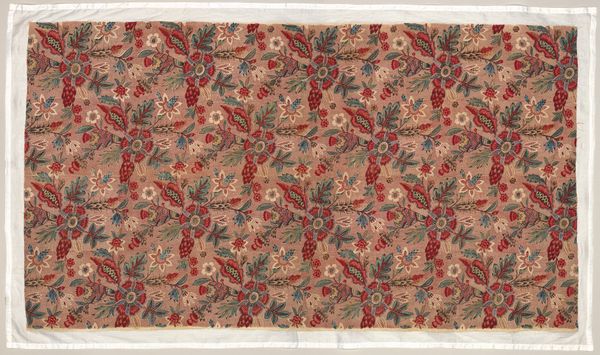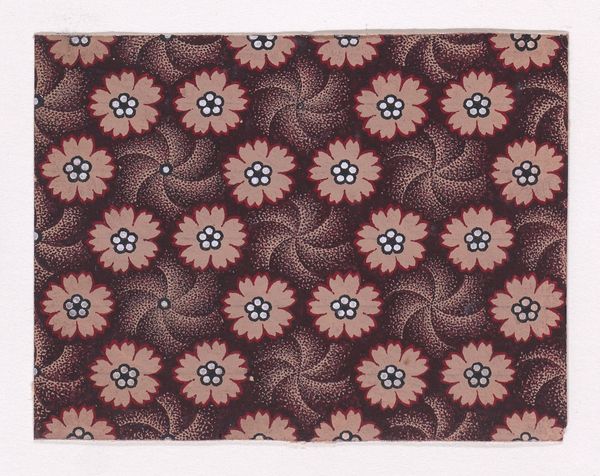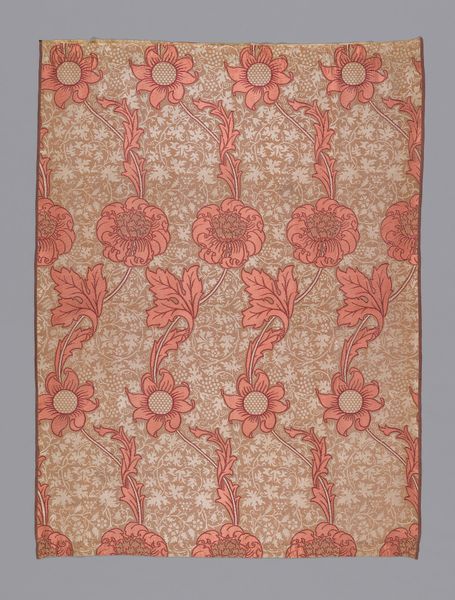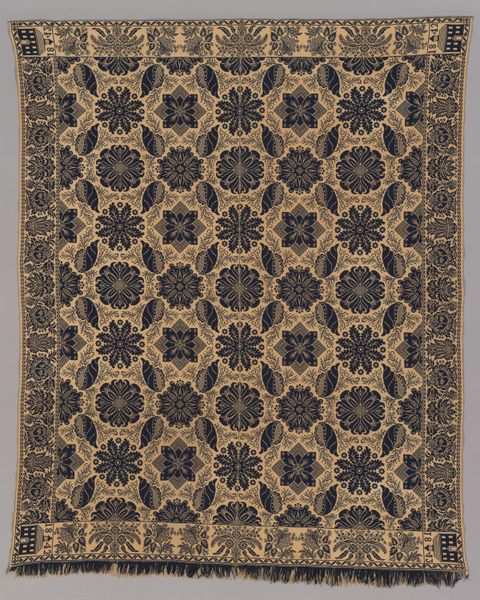
fibre-art, weaving, textile, wool
#
fibre-art
#
16_19th-century
#
arts-&-crafts-movement
#
pattern
#
weaving
#
landscape
#
textile
#
flower
#
wool
#
pattern design
#
repetitive shape and pattern
#
england
#
fabric design
#
imprinted textile
Dimensions: 43.6 × 68.7 cm (17 1/8 × 27 in.) Repeat: 23.2 × 23.2 cm (9 1/8 × 9 1/8 in.)
Copyright: Public Domain
Curator: Before us is a remarkable textile, the "Lily" Carpet, potentially dating between 1877 and 1940, crafted in England and now residing at the Art Institute of Chicago. Editor: My initial reaction is a dense and mesmerizing field of repetitive forms. There's a controlled tension between the darker background and the stylized botanical elements. It's almost hypnotic. Curator: Indeed, the composition demonstrates Morris’s keen understanding of pattern and symmetry. The interweaving of botanical motifs speaks directly to the Arts and Crafts movement's ideology. He really challenges our understanding of background. The lily forms create the main focus, but their unique shapes blend into the rest of the piece without overwhelming the design, leading to a more unified overall impression. Editor: Looking at the way those stylized lilies and smaller floral sprigs are arranged, I can’t help but think about the socio-political context. This was a deliberate move away from industrial production. Morris was making a clear statement, advocating for a return to handcraftsmanship and challenging Victorian-era mass production, and thus the decline in beauty as a value. The beauty found here became tied to the virtue of pre-industrial forms of labor. Curator: Absolutely, but the intrinsic value lies in how Morris utilizes visual space and form. Notice the careful orchestration of positive and negative space, for example, a rhythmic cadence that guides the eye across the surface. Consider also how the colors - primarily muted golds, greens, and a blush of red - contribute to the overall sensation of depth and visual richness. Editor: But even that carefully chosen palette isn't just aesthetic; it reflects the era's anxieties about industrialization's impact on the natural world, in terms of the destruction caused to nature through pollution but also cultural anxieties of the sublime of nature now being overcome through technological development. The use of natural dyes was, in itself, a political act. Curator: Regardless of its social commentary, what stands out is the refined interplay of form and color, creating a cohesive visual experience. One might view the design as the intersection of both structural integrity and optical pleasure, transcending any singular historical reading. Editor: A textile with beauty and utility, no matter its era. This piece embodies more than just visual patterns but, through form, weaves meaning.
Comments
No comments
Be the first to comment and join the conversation on the ultimate creative platform.

